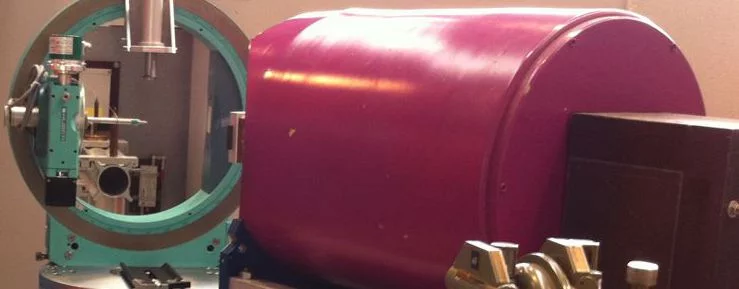ORION is an in-house two axis diffractometer that can be used to check and align samples. The sample sits on an easily accessible sample table and can be aligned using the two gonios. The instrument has a single He3-tube detector and the collimation can be easily changed to allow very fine tuning of alignments.
To use ORION please speak to your local contact or the instrument responsible.
| New commands | ||
|---|---|---|
| initaux: | initiate auxiliary UB | An initial UB matrix to get you quickly underway with your alignment |
| initaux h1 k1 l1 h2 k2 l2 | ||
| addauxref: | add auxiliary reflections | Add auxiliary reflections to reflist, these are assumed to be in the scattering plane and hence the phi, omega and 2theta angles are calculated. |
| addauxref h k l | ||
| home: | drives motors to rest position | Omega, Chi and Phi are driven to zero, 2theta is driven to 90. The instrument should be driven to zero once an alignment is complete. |
| home | ||
| mv: | relative movement of a motor | Move a motor relative to the current position, rather than to an absolute value of omega, chi, phi or 2theta. |
| mv motor degrees | ||
User Office
Provides all information about user access to the PSI Large Research Facilities
DUO Login
Direct link to the Digital User Office
